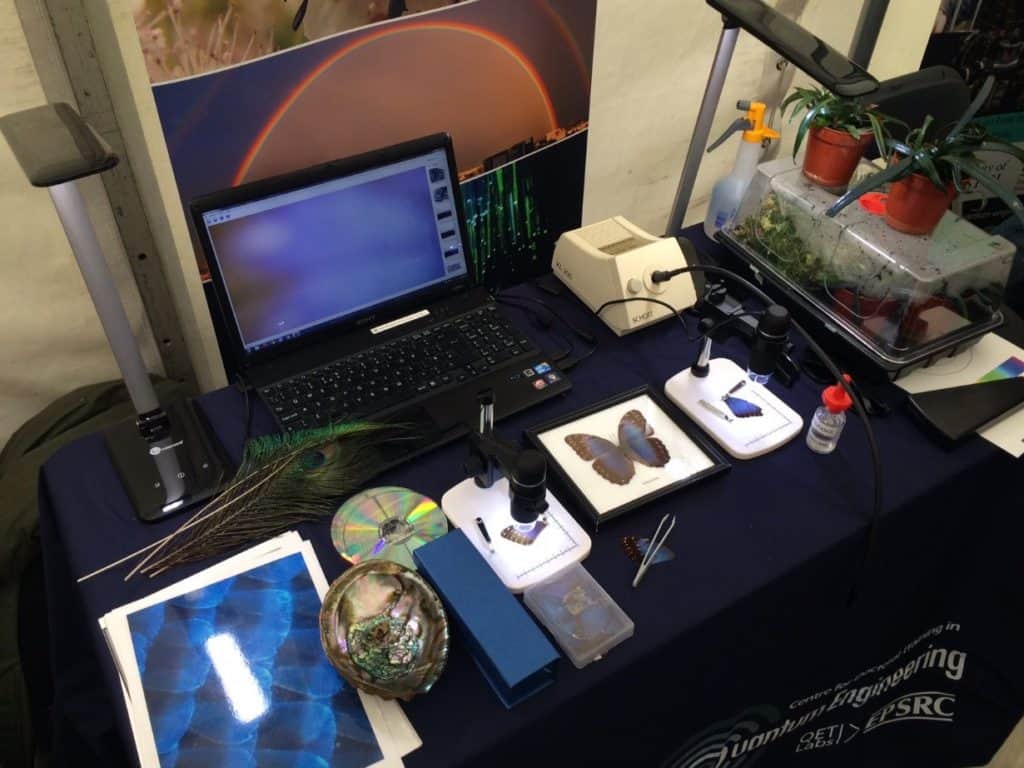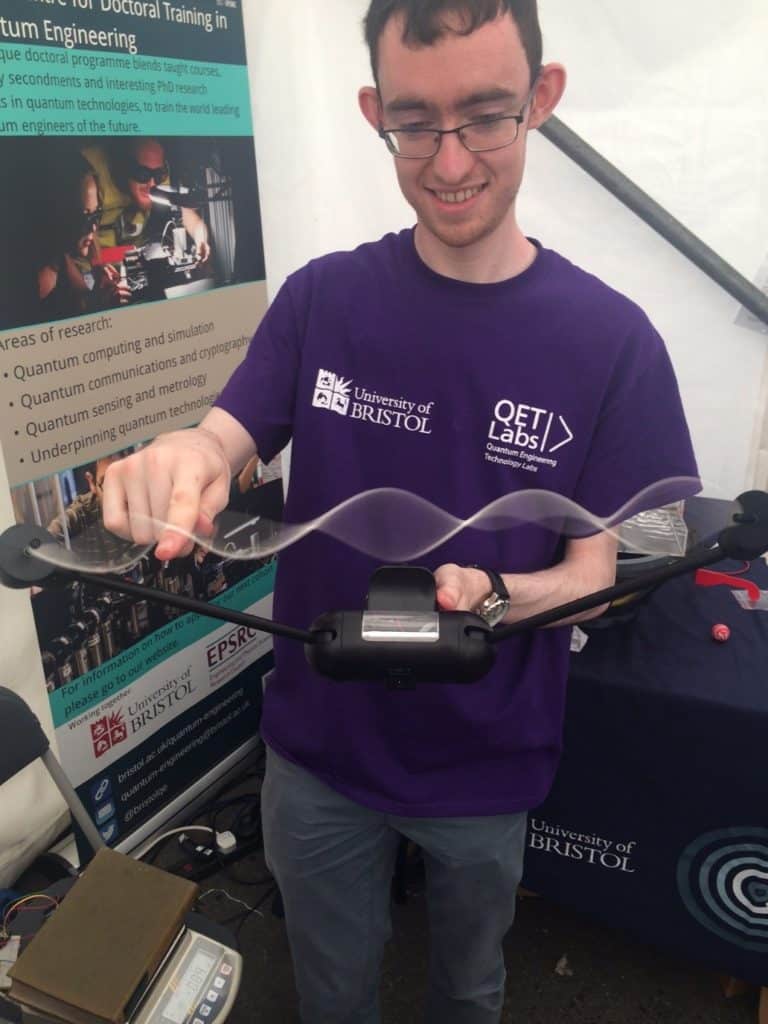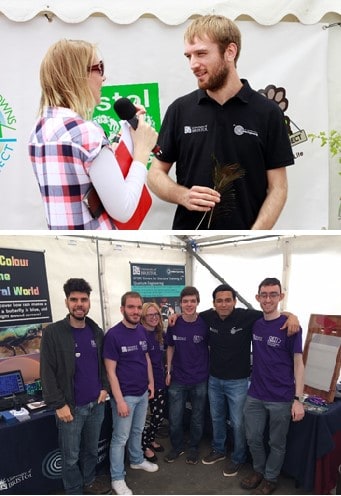 Euan was voted the winner of Lead Zone by students in June 2016. He got straight to work using his £500 prize money and here reports back on what he was able to do over this last year.
Euan was voted the winner of Lead Zone by students in June 2016. He got straight to work using his £500 prize money and here reports back on what he was able to do over this last year.
If you’d like the chance to win funding to develop your science outreach work, apply for I’m a Scientist at imascientist.org.uk/scientist-apply
After winning I’m a Scientist, I wanted to make sure I maximised the impact of the prize money that I had just been given. After a bit of thought, I decided that the best way for me to use the money was to help train some new PhD students that had recently joined the Quantum Engineering Centre for Doctoral Training (QECDT) that I am a part of, and work with them to put together a stall to present at the Festival of Nature — a natural science festival in Bristol organised by the Bristol Natural History Consortium each June.
After some training provided by the University of Bristol’s Centre for Public Engagement, the students and I set about planning a couple a demonstrations and ordering test items to begin construction of the stands. The first of the developed demos was to explain how a ‘Morpho Blue’ butterfly generated the fantastic blue colour of its wings via the tiny (nanoscale!) structures that it has evolved on its wings. This was done by looking at the structure of the wing using a USB microscope and also by comparing the wing to other iridescent items, including plants and peacock feathers.

The ‘Morpho Blue’ butterfly demonstration, including butterfly wings, a microscope, peacock feathers and iridescent shells and plants.
The second demonstration was to show the strange natural phenomenon of wave-particle duality, a feature of fundamental physics where some things can act as both a wave and a particle. This was done using a tank of silicon oil that was placed on top of a speaker that was oscillating at a particular frequency. This allowed us to produce droplets on the surface (see the image) that looked like particles but would sometimes act like waves.

The oil drop ‘particles’ generated as part of the demonstration. The particles form a triangular lattice because of the interaction of the waves generated in the oil bath below.
After the stand was completed and all set, it was time to take the demonstrations to the Festival of Nature. The festival this year saw over 8000 people come down to Bristol’s harbour side to see stands and demonstrations covering all of nature. Presenting at the festival were ourselves, the BBC, Bristol Zoo, the University of Bristol and UWE, and many more institutions and charities. The students spent two days talking visitors through the two demonstrations we had developed as they came and visited the tent we had set up in. We also had students providing outreach ‘on-the-go’ with the busking demos that we had put together using the prize money.

Ross of the QECDT demonstrating a standing wave – one of the busking demonstrations bought for the Festival of Nature.
Overall the weekend went really great and we had lots of good feedback from visitors to our stand, and even coverage from the BBC. The students learnt a lot from the experience and some have gone on to be involved with other outreach activities in the department. Parts of the demonstration have also been taken to the Royal Society Summer Exhibition and have been made available to those within the group to use of further outreach activities. I’d like to thank all of the Quantum Engineering students for the effort they put in over the very warm weekend and the team at the Centre for Public Engagement for the support they provided.

TOP Euan talking to the BBC about the stand from the Quantum Engineering Centre for Doctoral Training. BOTTOM Part of the team at the festival next to our stand (L to R): Joao, Giorgos, Rachel, George, Jorge, and Ross.

